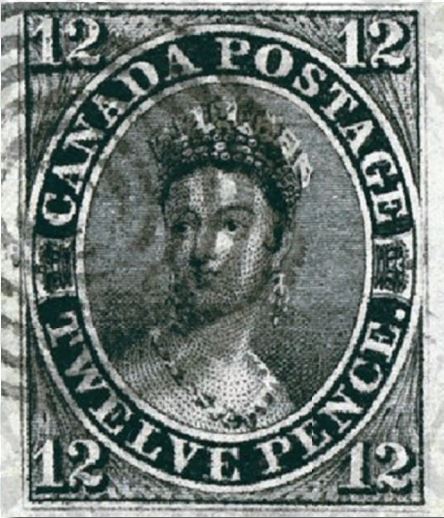INSIDER 29 | The Story Behind the Stamp


From the David Pitts Collection, to be offered for sale by Spink during 2018 - by David Parsons
The first adhesive postage labels to be issued in British North America were mentioned in the Journals of the Legislative Assembly where a resolution to adopt adhesive postage stamps was made on 22nd May 1849 “that postage stamps for prepayment be allowed and that Colonial stamps be engraved”.
This was passed on 25th May and approved by Council on the following day. It was decided that the first series of stamps should comprise 3d., 6d. and 1/ values.
Essays for the 3d. and 1/- stamps were prepared by Sir Sandford Fleming (1827-1915), a Scottish Canadian engineer and inventor who proposed worldwide standard time zones, left a huge body of surveying and map making, and who also engineered much of the Canadian Pacific Railway. Both his designs showed the Canadian Beaver, the 3d. design being adopted though as the other two values were intended chiefly for use on letters leaving the country it was decided that they should show the Queen and her Consort, Prince Albert.
The contract for the printing of these labels was given to the well-known firm of engravers, Rawdon, Wright, Hatch & Edson, of New York who were contractors to the Canadian Government for debentures as well as banknote engravers for several Canadian banks. They held the contract until 1867, having in the meantime changed their title to the now familiar American Bank Note Co., New York. Printing plates were produced for all three values in sheets of 200 in two panes of 100 and plate proofs were produced with the 12d. being overprinted “SPECIMEN” in carmine both vertically and diagonally, and in green vertically. The issued stamps were printed on handmade crisp laid paper. The 12 pence stamp shows a stunning shoulder portrait of the Queen taken from Alfred Edward Chalon’s full length painting of the Queen in her State robes upon going to the House of Lords for her first official act, the prorogation of the Parliament, on 17 July 1837.
Some 51,000 of the 12d. stamp were ordered on 27 March 1851 and delivered on 14 May. The poor quality paper irritated both the mailing public and the postal authorities. The plate was not of fine manufacture and the plate was extensively re-entered, so much so in fact that a normal is rarer than one showing evidence of re-entering. Although there was just one delivery of the stamp, there was extensive correspondence between the contractors and the Post Office department who wrote to James Morris, the Postmaster-General in Toronto on 8 May that “the stamps would have been sent to you on Saturday next, but on examining them we found them to be so badly printed that they will have to be reprinted, and the present ones destroyed. They will be sent on Wednesday next.”
The stamp saw little use, not only because of its high denomination but because it’s adhesive and paper did not adhere well to envelopes. During the few years that it was on sale only 1,450 were sold. The stamp was discontinued on 4 December 1854 and were, in accordance with the practice, in cases of the discontinuance of stamps, destroyed. A sorry tale for what is a beautiful looking stamp.
Few unused examples are recorded and of those used few are in optimum condition. The example from the David Pitts Collection, to be offered in London during 2018, is in fantastic condition and is generally considered to be the finest used example available in the public domain.



